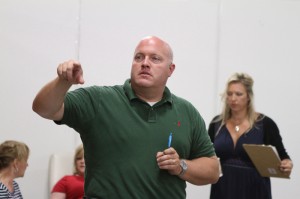 Akron Children’s, firmly rooted in northeast Ohio and the Midwest since 1890, is looking to a West Coast children’s hospital for guidance as it begins a $200 million expansion of its main campus.
Akron Children’s, firmly rooted in northeast Ohio and the Midwest since 1890, is looking to a West Coast children’s hospital for guidance as it begins a $200 million expansion of its main campus.
As the hospital undertakes a year-long process to design a new medical tower that will include a new emergency department, neonatal intensive care unit, outpatient surgery center and expanded clinical space, it borrows greatly from the experienced learned at Seattle Children’s Hospital in the early 2000s.
Working closely with Joan Wellman & Associates, Seattle Children’s followed a process called Integrated Facility Design to expand its campus, adding a universal clinic, outpatient surgery center, imaging center, lab and pharmacy.
Early estimates indicated the Seattle project would span 110,000 square feet and cost $100 million. The hospital board approved a $70 million total cost. In the end, the 80,000 square foot (a 30 percent reduction) facility ran under the allocated budget by $3 million and opened a month early.
The secret was turning to the Lean Six Sigma principles perfected by Toyota and other Japanese manufacturers that focus on eliminating waste, improving efficiency and focusing on customer satisfaction.
A team from Akron Children’s has visited Seattle Children’s. The hospital created the Mark A.Watson Center for Operations Excellence in 2009 and this staff has been tackling problems big and small for the hospital. Successes range from improving the efficiency of the hospital sterile process department (essential to meeting the demand for more surgeries) to improving the scheduling of MRIs.
The approach to building design essentially flipped the traditional method.
“Right now we have everyone working together from the very start,” said Magnus Nilsson, a senior consultant for the KLMK Group, a key player in the project. “Typically, an owner works with an architect for a year and then they bring in the mechanical, electrical, structural and civil engineers and the construction team. The goal here is to have a seamless communication process.”
Nilsson said the goal of having zero change orders – costly changes in the plan once construction starts – is a realistic goal.
Lisa Aurilio, chief nursing officer for Akron Children’s, said she remembers earlier in her nursing career pushing a patient on a stretcher in a hospital that had just opened. But as they approached the treatment room, she couldn’t get the patient into the room – the door width was too narrow.
“As nurses, we known how to give really good patient care, but we don’t know how to read blueprints,” Aurilio said. “This process [including using life-size mock-ups of an ED or NICU] lets us avoid those mistakes. It allows us to get the patient’s voice in the process. After all, it’s about them.”
Doug Dulin, senior director of the Mark A.Watson Center for Operations Excellence, said the process so far has reduced Akron Children’s new medical tower from 360,000 to 330,000 square feet.
According to Dulin, in Lean Six Sigma language, patient/customer flow is often compared to a river. Good building design will keep patients moving along “downstream.” Bad design will cause waits, confusion and bad experiences.
“We want patients to come into the ED, get registered, see a provider, get the care they need and then go home as quickly as possible,” Dulin said.
Learn more about Akron Children’s building expansion project, called “Building on the Promise.”
Credit: “Leading the Lean Healthcare Journey; Driving Culture Change to Increase Value” by Joan Wellman, Howard Jeffries and Pat Hagen. This book was published by CRC Press, a Taylor and Francis Company.












